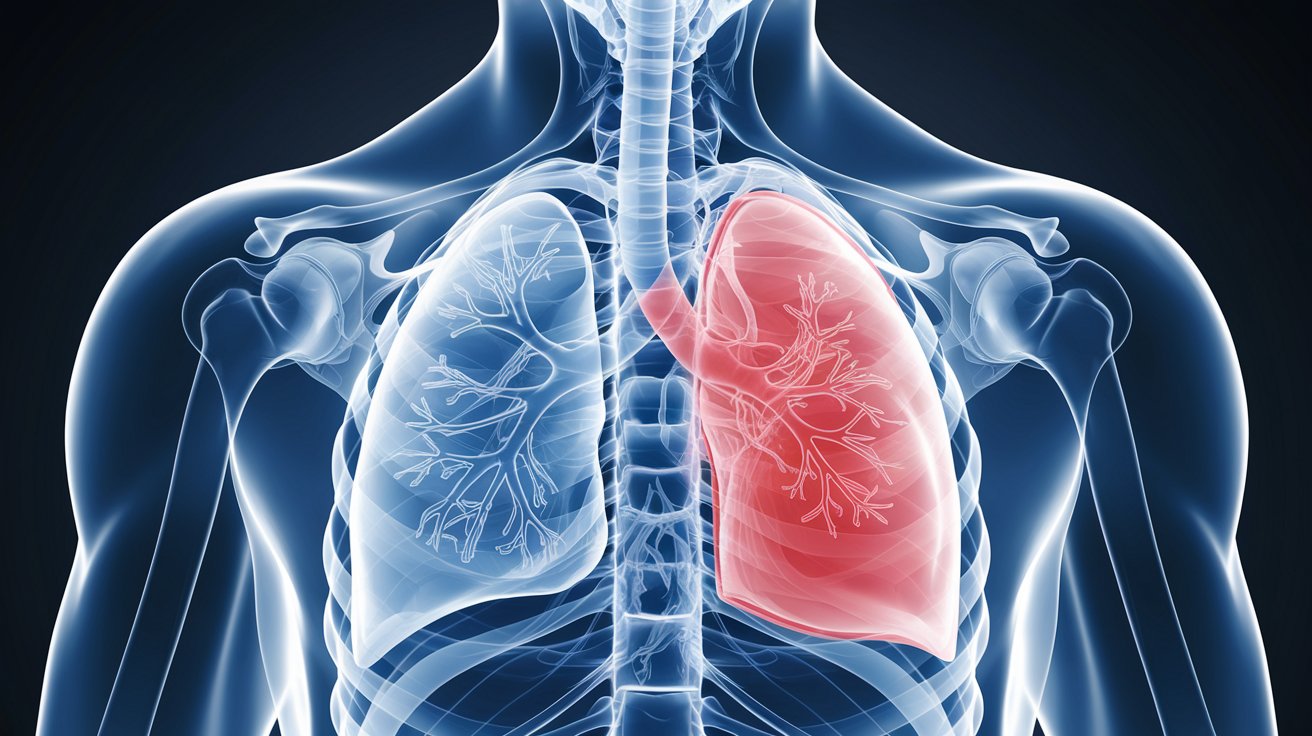
Congenital Unilateral Pulmonary Hypoplasia is a rare condition where one lung doesn't develop fully before birth. This can lead to breathing difficulties and other health issues. Symptoms often include rapid breathing, bluish skin, and frequent lung infections. Causes might involve genetic factors or issues during pregnancy. Diagnosis usually happens through imaging tests like X-rays or MRIs. Treatment varies based on severity, ranging from medication to surgery. Understanding this condition helps in managing it better and improving the quality of life for those affected. Let's dive into 25 essential facts about this intriguing medical condition.
Key Takeaways:
- Congenital Unilateral Pulmonary Hypoplasia (CUPH) is a rare condition where one lung is underdeveloped at birth, leading to respiratory issues and complications. Early diagnosis and intervention can significantly improve quality of life.
- Living with CUPH requires lifestyle adjustments and regular monitoring. Avoiding respiratory irritants, getting vaccinations, and seeking support can help manage the condition effectively.
What is Congenital Unilateral Pulmonary Hypoplasia?
Congenital Unilateral Pulmonary Hypoplasia (CUPH) is a rare condition where one lung is underdeveloped at birth. This can lead to various respiratory issues and complications. Let's explore some fascinating facts about this condition.
-
CUPH affects only one lung, leaving the other lung to compensate for the underdeveloped one.
-
The exact cause of CUPH is unknown, but it is believed to occur during fetal development.
-
CUPH is often diagnosed through imaging techniques like X-rays, CT scans, or MRIs.
-
Symptoms of CUPH can range from mild to severe, depending on the extent of lung underdevelopment.
-
Some individuals with CUPH may experience frequent respiratory infections due to the compromised lung function.
How Common is CUPH?
Understanding the prevalence of CUPH can help grasp its rarity and the importance of awareness.
-
CUPH is considered a rare condition, with an estimated incidence of 1 in 15,000 live births.
-
It is more commonly diagnosed in males than females.
-
CUPH can be associated with other congenital anomalies, such as heart defects or skeletal abnormalities.
-
Early diagnosis and intervention can significantly improve the quality of life for individuals with CUPH.
-
Despite its rarity, CUPH can occur in any population, regardless of ethnicity or geographic location.
Symptoms and Diagnosis of CUPH
Recognizing the symptoms and understanding the diagnostic process is crucial for managing CUPH effectively.
-
Common symptoms include shortness of breath, rapid breathing, and chest pain.
-
In severe cases, cyanosis (bluish skin) may occur due to low oxygen levels in the blood.
-
CUPH is often detected in infancy or early childhood, but milder cases may go unnoticed until later in life.
-
Pulmonary function tests can help assess the extent of lung impairment in individuals with CUPH.
-
Genetic testing may be recommended if CUPH is suspected to be part of a broader syndrome.
Treatment and Management of CUPH
Managing CUPH involves a combination of medical interventions and lifestyle adjustments.
-
There is no cure for CUPH, but treatments aim to manage symptoms and prevent complications.
-
Oxygen therapy may be necessary for individuals with severe respiratory distress.
-
Regular monitoring by a pulmonologist is essential for managing CUPH effectively.
-
In some cases, surgical interventions may be required to correct associated anomalies or improve lung function.
-
Physical therapy and respiratory exercises can help strengthen the respiratory muscles and improve lung capacity.
Living with CUPH
Living with CUPH requires adapting to certain lifestyle changes and being mindful of respiratory health.
-
Individuals with CUPH should avoid exposure to respiratory irritants like smoke and pollutants.
-
Vaccinations, especially for respiratory infections, are crucial for preventing complications.
-
Regular follow-up appointments with healthcare providers are essential for monitoring lung health.
-
Support groups and counseling can help individuals and families cope with the challenges of living with CUPH.
-
Advances in medical research continue to improve the understanding and management of CUPH, offering hope for better outcomes in the future.
Understanding Congenital Unilateral Pulmonary Hypoplasia
Congenital Unilateral Pulmonary Hypoplasia (CUPH) is a rare condition that affects lung development in newborns. Knowing the symptoms, causes, and treatment options can make a big difference in managing this condition. Early diagnosis is crucial for better outcomes. Symptoms like difficulty breathing, rapid breathing, and bluish skin can signal CUPH. Causes often include genetic factors or issues during pregnancy. Treatment varies but may involve oxygen therapy, surgery, or medications to manage symptoms.
Parents and caregivers should work closely with healthcare professionals to create a tailored care plan. Support groups and resources can offer additional help and information. Staying informed and proactive can improve the quality of life for children with CUPH. Always consult medical experts for advice and treatment options.
Frequently Asked Questions
Was this page helpful?
Our commitment to delivering trustworthy and engaging content is at the heart of what we do. Each fact on our site is contributed by real users like you, bringing a wealth of diverse insights and information. To ensure the highest standards of accuracy and reliability, our dedicated editors meticulously review each submission. This process guarantees that the facts we share are not only fascinating but also credible. Trust in our commitment to quality and authenticity as you explore and learn with us.
